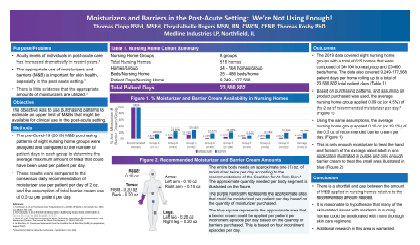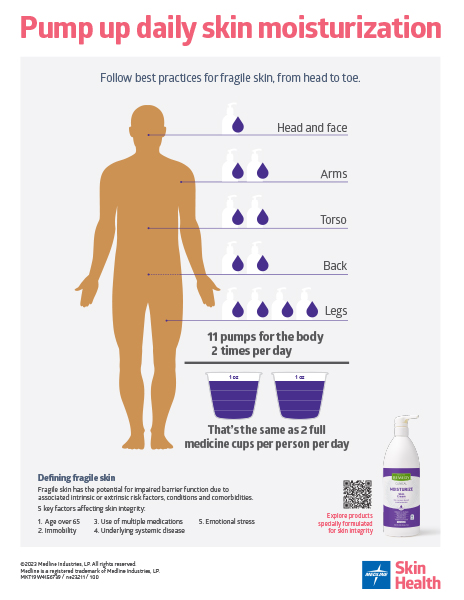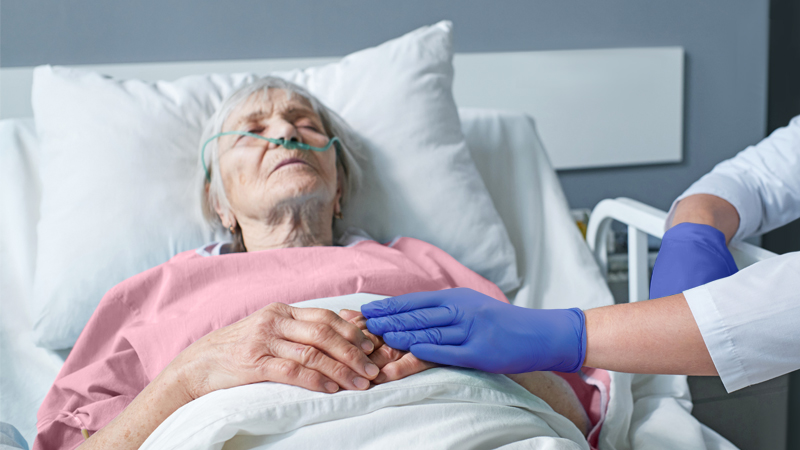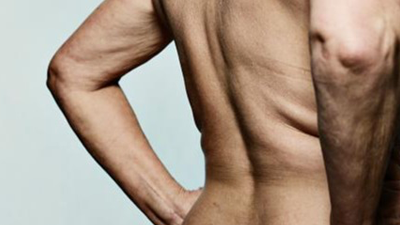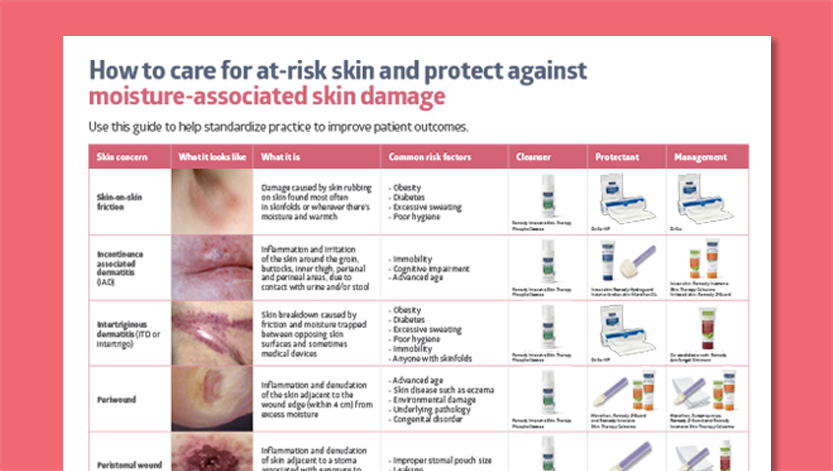Surprising data on skin care usage: How much is enough to prevent skin breakdown?
Moisturize to help reduce TEWL and protect fragile skin.
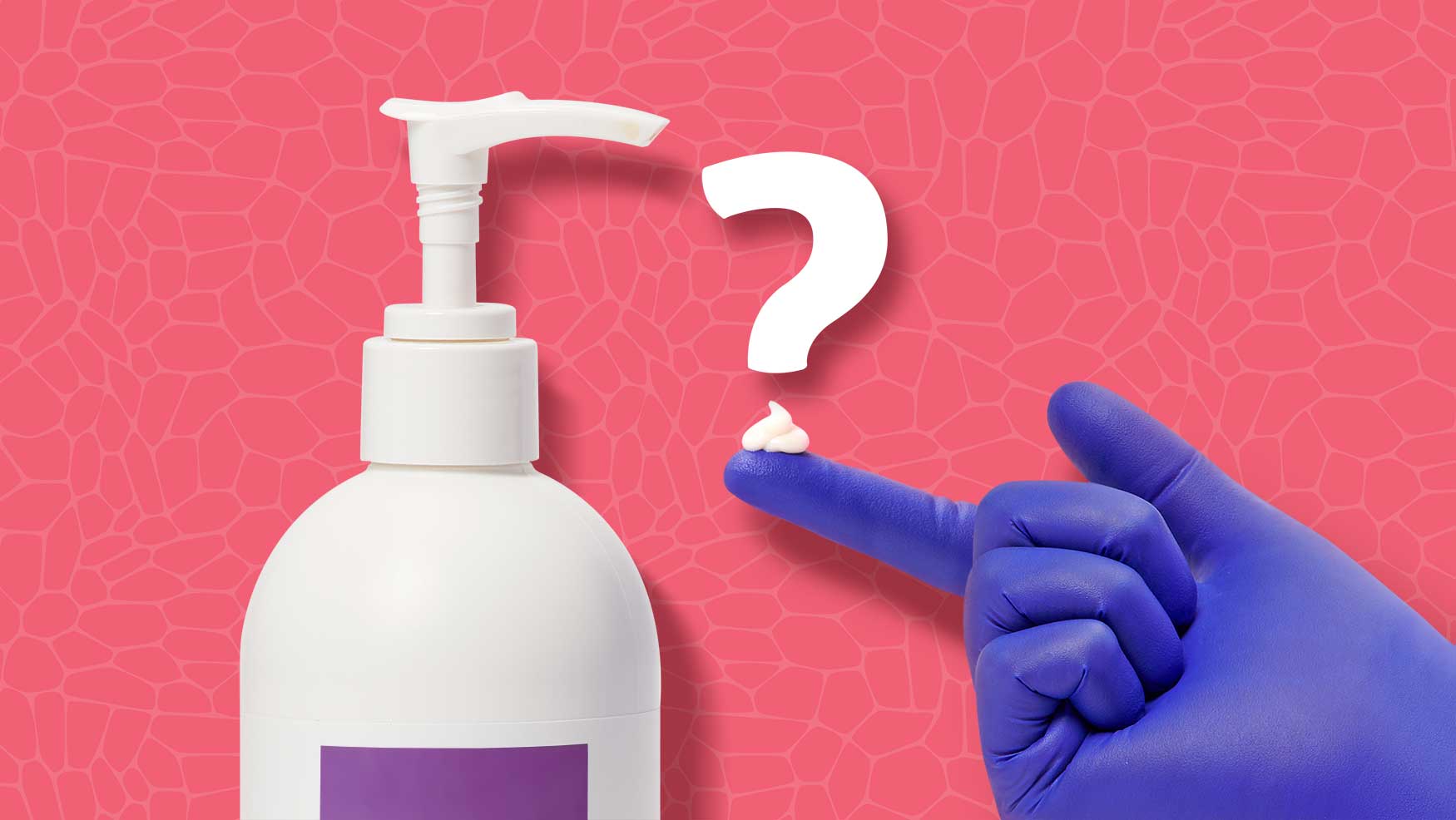
When it comes to everyday skin care for your patients and residents, are you doing what you think you’re doing? It’s an important question, and eye-opening new data shows the answer may be, “No.” The research shows, there’s a staggering gap between what healthcare facilities think they’re doing—and what’s really happening.1
How does your skin care routine rate?
Skin care is an essential part of a person’s overall health. When the skin’s natural barrier is compromised due to pressure, friction, moisture and other factors, skin breakdown can occur, putting skin at risk for more serious injury. Caregivers help prevent skin breakdown and transepidermal water loss (TEWL) by following evidence-based guidelines and applying optimal quantities of moisturizer and barrier cream. But a new study shows that the volume of moisturizer and barrier cream being applied to people in care settings is often not enough to provide proper protection for at-risk skin.1 On top of that, common comorbidities such as advanced age, immobility, incontinence and diabetes can raise the risk of skin damage.
Read on to learn more about the research on skin care utilization in healthcare settings. Then consider ways you can help make it easier for them to improve skin outcomes.
What’s the big deal about TEWL?
Transepidermal water loss (TEWL) occurs when water passes from the dermis through the epidermis and evaporates from the skin’s surface. The more TEWL increases, the more the skin’s barrier function is weakened. Compared to other creams, such as those with ceramide, nutrient-rich creams with dimethicone are proven to reduce moisture loss, providing stronger defense against TEWL.
Revealing a gap in skin care usage
How do you know if caregivers are applying an adequate volume of moisturizers and moisture barriers? “We always had an inkling that not enough preventative skin care was being used,” says Tom Clopp, Medline Market Sales Director. “The question was, how can we calculate what is being used?”
Compiling data from more than 23 million patient days at long-term care facilities, Medline skin health specialists uncovered two significant findings:
Moisturizer: Recommended vs. used
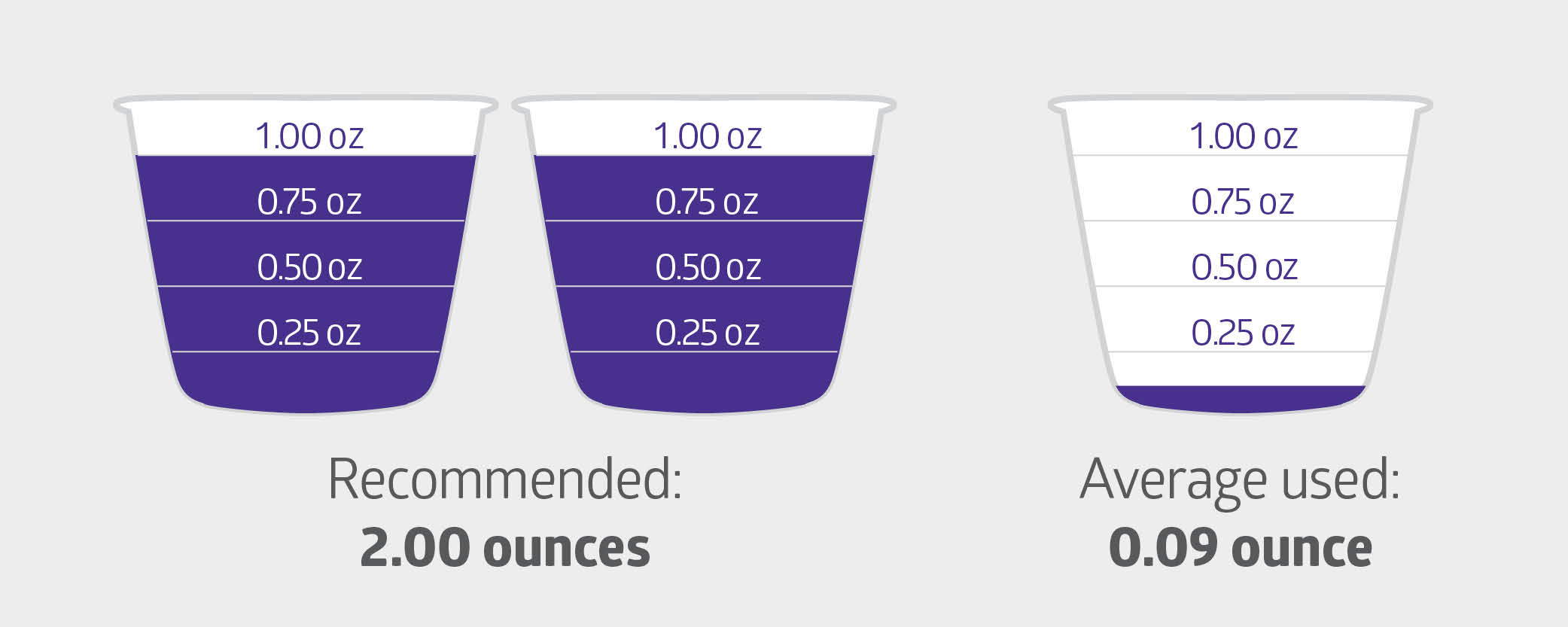
Recommended: 2 full ounces per person per day
Research data: Moisturizer on hand for each individual equaled about 0.09 ounce—enough to cover only one hand twice a day or both hands once a day
Barrier cream: Recommended vs. used
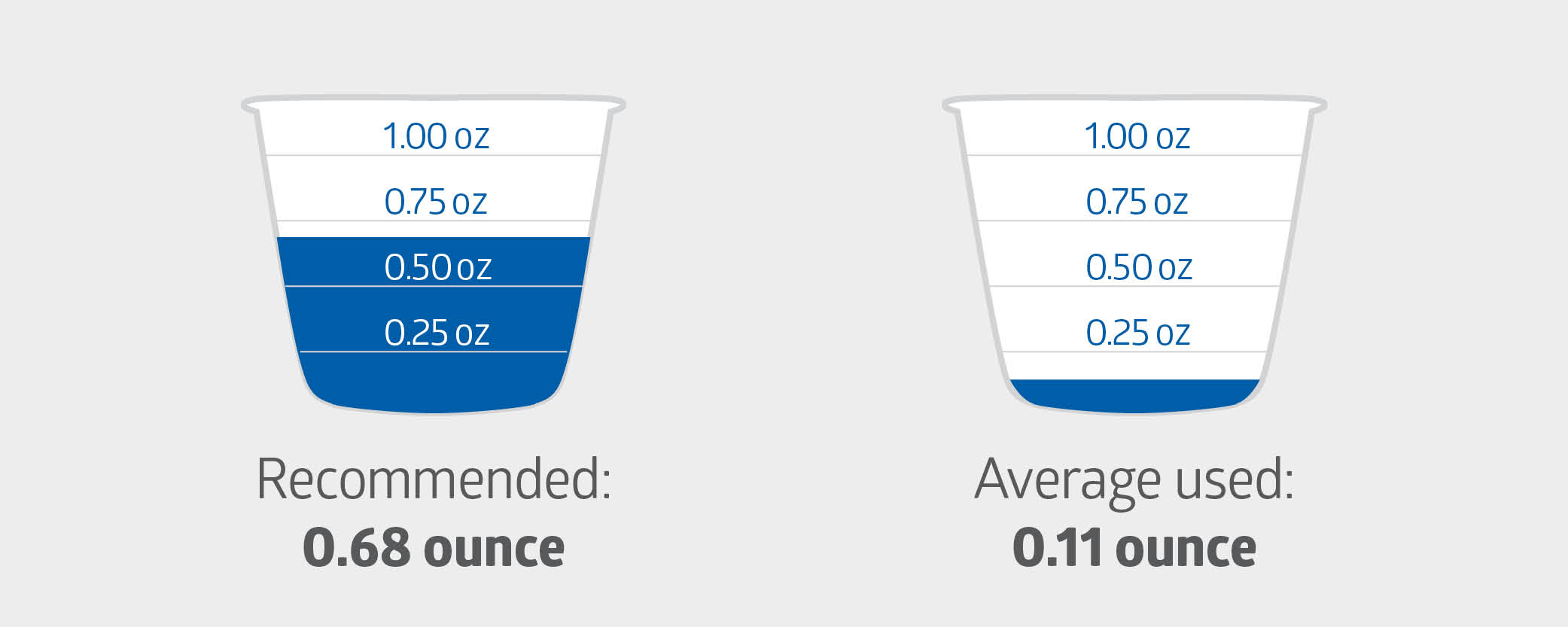
Recommended: 0.68 ounce per person per day
Research data: Barrier cream on hand for each individual equaled about 0.11 ounce—enough to cover only a small perineal area
“We didn’t know what the data was going to show, and when we got it, the numbers were much lower than what we thought they were going to be.”
Tom Clopp
Medline Market Sales Director
Once the information was revealed, it was clear that the results were unexpected. “We didn’t know what the data was going to show, and when we got it, the numbers were much lower than what we thought they were going to be,” Clopp notes. “It helped start an important conversation.”
Read more about the research presented at the 2022 Wild on Wounds conference. Download the poster
After reviewing the data, a group of leading industry experts were inspired to form an independent coalition to help draw attention to what they consider a wide-ranging skin and wound care issue. Twenty-one consensus statements were published by this new Coalition for At-Risk Skin (CARS) to help drive best practice care and educate healthcare teams to reduce TEWL and fight pressure injuries.
“It’s important to take a hard look to see if what you’re doing is really what you think you’re doing,” Clopp says.
Skin care usage recommendations
Existing guidelines on preventing skin breakdown come from established organizations such as the National Pressure Injury Advisory Panel and the International Skin Tear Advisory Panel. They note the importance of regular skin assessment, proper positioning and turning, adequate nutrition, and proven skin care, including moisturization. The CARS recommendations support these with additional practice considerations.
Here are four key action items:
1. Moisturize 2x a day with 1 ounce per application. For individuals with at-risk skin, a moisturizer should be applied daily at a minimum and always after bathing. Twice daily moisturization has been demonstrated to show additional benefits. The approximate amount needed for a single application of moisturizer to the entire standard sized adult body is 30 grams or a full 1-ounce liquid measuring cup’s worth.
Estimating each pump’s worth of product as about the size of a quarter, you’d want to use 11 full pumps. See the diagram.
Pump up daily skin moisturization
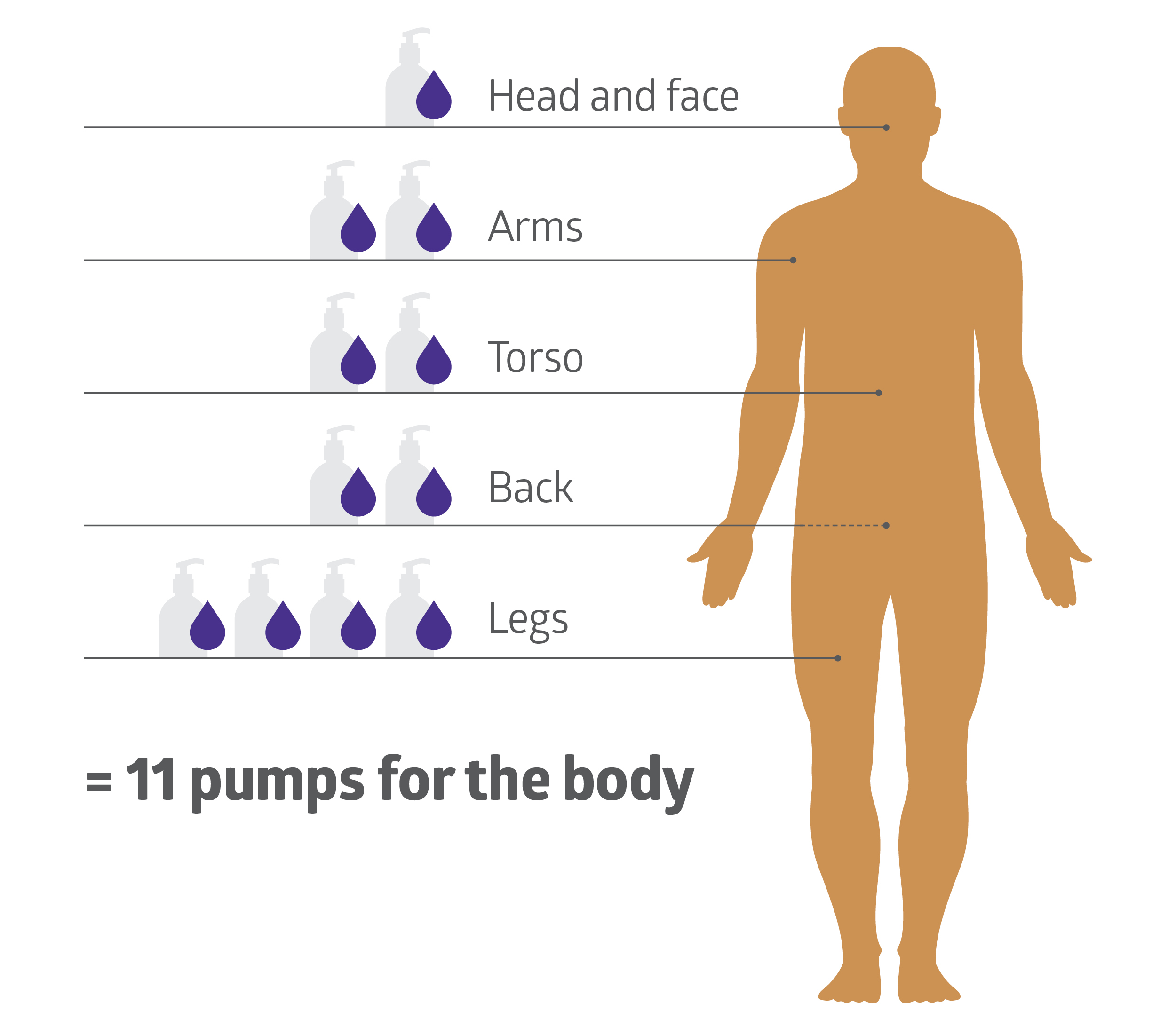
2. Look for quality ingredients. The properties and ingredients in skin care products impact their efficacy. This includes moisturizers and skin barriers. For instance, carbomers are synthetic thickening agents that make products feel creamy.2 Instead, nutrient-rich ingredients such as green tea and blue-green algae add protein and antioxidants.
3. Choose creams over lotions for decreased TEWL performance. For individuals with fragile skin, creams or ointments have been shown to be better than lotions at boosting skin barrier function and keeping moisture from evaporating. Lotions may be more drying. Studies also show that moisturizers with ingredients such as oils, petrolatum and silicones help decrease transepidermal water loss (TEWL) better than lotions that often contain more water and dehydrating ingredients.3
4. Use a preventive barrier after every incontinent episode. Breathable skin barrier products are recommended when moisture, microclimate, friction and shear are contributing factors to at-risk skin. This is often the case with people in long-term care who are incontinent. Barriers with dimethicone can help make it easier to protect skin from prolonged wetness.
Inspire the skin care habit
When it comes to proper skin care to help prevent skin breakdown, your team may face challenges including time constraints, lack of education and not enough supplies. “Nurses may be faced with not actually knowing which product to use for what condition because they have not received adequate education and training. This may lead to insecurity and hesitation to intervene,” says Patricia Turner BSN, RN, CWOCN, CWS, Medline Director of Clinical Resources Skin Health.
“We need to engage and empower frontline staff and caregivers to embrace skin care best practices,”

Katie James
Medline Clinical Education Specialist
Here are some ways you can help encourage daily skin care:
- Make skin care a team effort. Ongoing staffing shortages may mean bedside nurses could use a little help from their colleagues. Enlist the help of other clinicians who connect with patients and residents, including occupational therapists, dieticians and physical therapists. They can also apply moisturizer instead of the bedside nurse or, when possible, remind patients and residents to self-apply.
- Provide education and training on the importance of the right amount of skin care everyday. Consider creating a nursing skills fair around the topic. Highlight the positive impact that skin care can have on patient outcomes, reducing skin breakdown and even saving time and money—treatment for damaged skin can be time-consuming and costly.
- Use familiar items as a measurement guide. Reference some easy comparisons to help caregivers visualize how much moisturizer and barrier they really need: For instance, for moisturizer, the total one-ounce quantity would be about equal to four ketchup condiment packets or three coffee creamers. Print and share this poster for at-a-glance visual cues.
- Ensure easy access to supplies. Be sure that moisturizers and barrier creams are readily available and in proper quantities, so no one has to go hunting for everyday skin care.
- Involve patients and residents in their care. When they’re able, every patient and resident can also be empowered to self-apply moisturizer wherever they can reach on their bodies. Activities directors at long-term care facilities could start activities with moisturizing time. For example, what if, before a Bingo game or a guest performance, residents were encouraged to pull out their moisturizer and moisturize their hands and arms.
- Recognize and reward success. Show caregivers that they’re helping to build a culture of prevention through their efforts at making daily skin care a habit. One way to do this is to partner with your vendor to help calculate moisturizer and barrier cream usage.
“Knowledge is power,” Turner says. “And the most effective way for clinical interventions to be carried out is to arm the staff with the right product, with the right understanding and knowledge of its use, so they feel empowered to effectively carry out those interventions.
Key takeaway
Appropriate skin care utilization is an important part of preventing skin breakdown and reducing transepidermal water loss. New research shows that healthcare facilities may need to increase their utilization of daily skin care such as moisturizer and barrier creams. Help caregivers remember the right amounts with visual cues, education and easy access to products. Together, we can help caregivers get a head start on skin care.
References:
- Data on file
- Tee-Melegrito, R. A. (2022, April 19). What are carbomers? https://www.medicalnewstoday.com/articles/carbomer
- Beeckman, D., Campbell, KE, LeBlanc, K. Campbell, J, et al (2020). Best Practice Recommendations for Holistic Strategies to Promote and Maintain Skin Integrity
